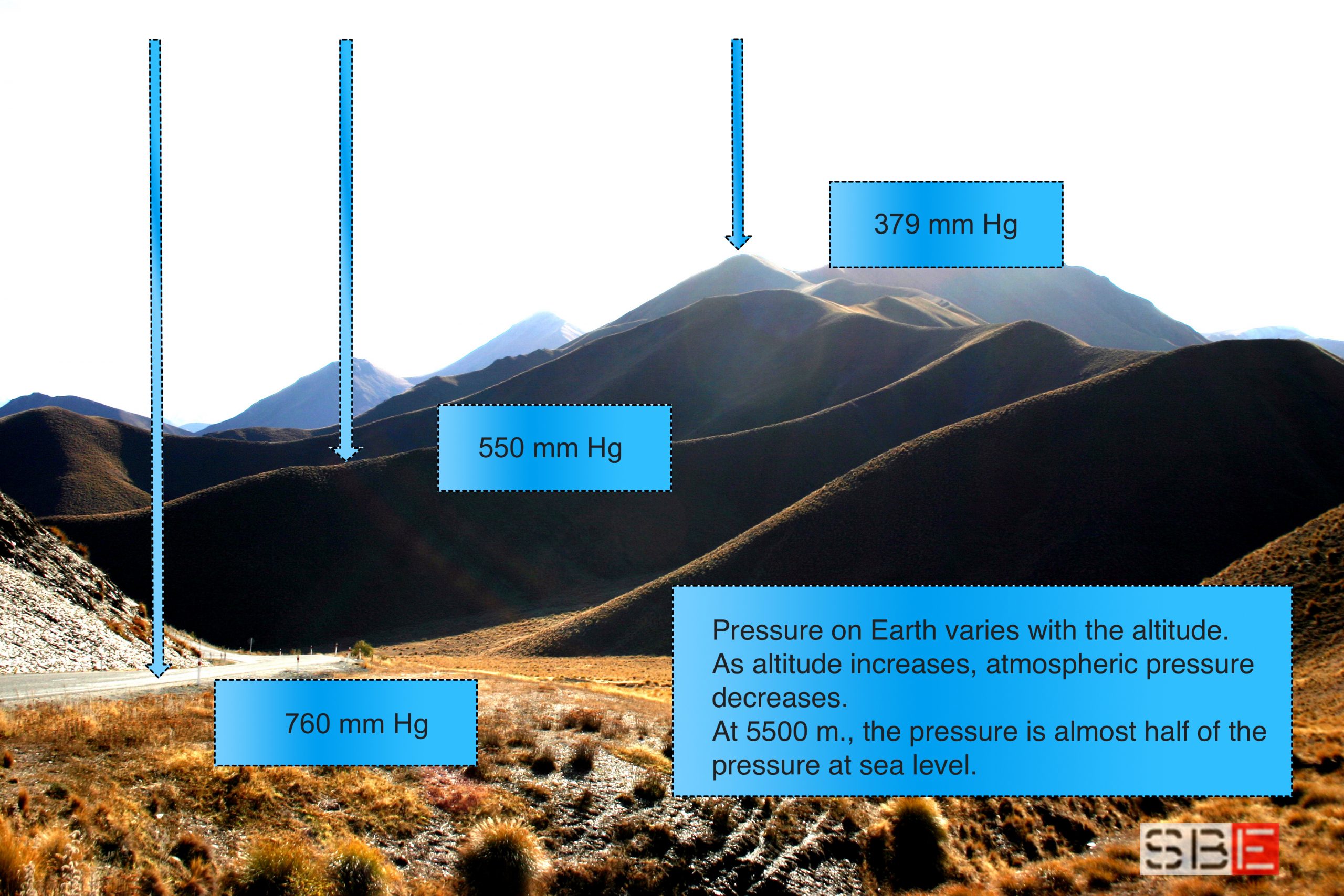Atmospheric Pressure and Air Density
A simple definition of atmospheric pressure could be: ‘The pressure that the weight of air, in atmospheric space, exerts on the earth’s surface.’
Its value corresponds to an air column – as high as the atmosphere – weighing on a surface of 1 square centimetre. It varies from place to place as it depends on the density of the air, which, in turn, goes according to temperature, altitude and humidity. By convention, it is the reference standard of atmospheric pressure at sea level, at 45° latitude and a temperature of 0° centigrade. In these conditions, the pressure is equal to the weight of a mercury column with a section of 1 cm square, 760 mm high.
The barometer gives us its measurement in hectopascals or millibars. At mean sea level (MSL), one standard atmospheric pressure (atm) unit equals 1013hPa/mbar. Above 1 atm, we will have High-Pressure; below 1 atm, a Low-Pressure value.
1(p)atm = 101,325 Pa, 1013.25 hPa, 1013.25 mbar, 760 mm Hg, 29.9212 inches Hg or 14.696 psi.

Air density is the mass per unit volume of the earth’s atmosphere, equal to 1.225 kg/m³ under standard conditions: at sea level (pressure of 1013.25 mbar), 0% humidity and a temperature of 15 ° C.
𝝆air = 1.225 kg/m3
Atmospheric pressure and air density are proportional. Temperature, which varies in altitude and latitude, affects both. The Earth is heated differently from the ground to the troposphere and from the equator to the poles, based on the reflected heat and the incidence of solar rays, as we will see later.
The pressure variation rate in altitude is about one hPa every 10 meters. (30 ft.).
The humidity of the air influences density and pressure. When the air is warm and humid, it is lighter, its density decreases (water is less dense than oxygen and nitrogen), and the pressure decreases accordingly.
To put it in other words, rising in altitude above sea level, in addition to a decrease in temperature, will lead to a reduction in air density and a lower pressure weight due to the difference in the height of the column of air that weighs on the earth’s surface. At around 5500 m above sea level (asl), the atmospheric pressure is about half of what occurs at sea level.
During the day, there are two highs and two lows. The highest maximum pressure is around 10:00; the lowest is at 22:00. The highest minimum is about 04:00, and the lowest is at 16:00.
Concentric lines called isobars represent points with the same atmospheric pressure on meteorological maps—the isobars separate areas characterised by different forces.
